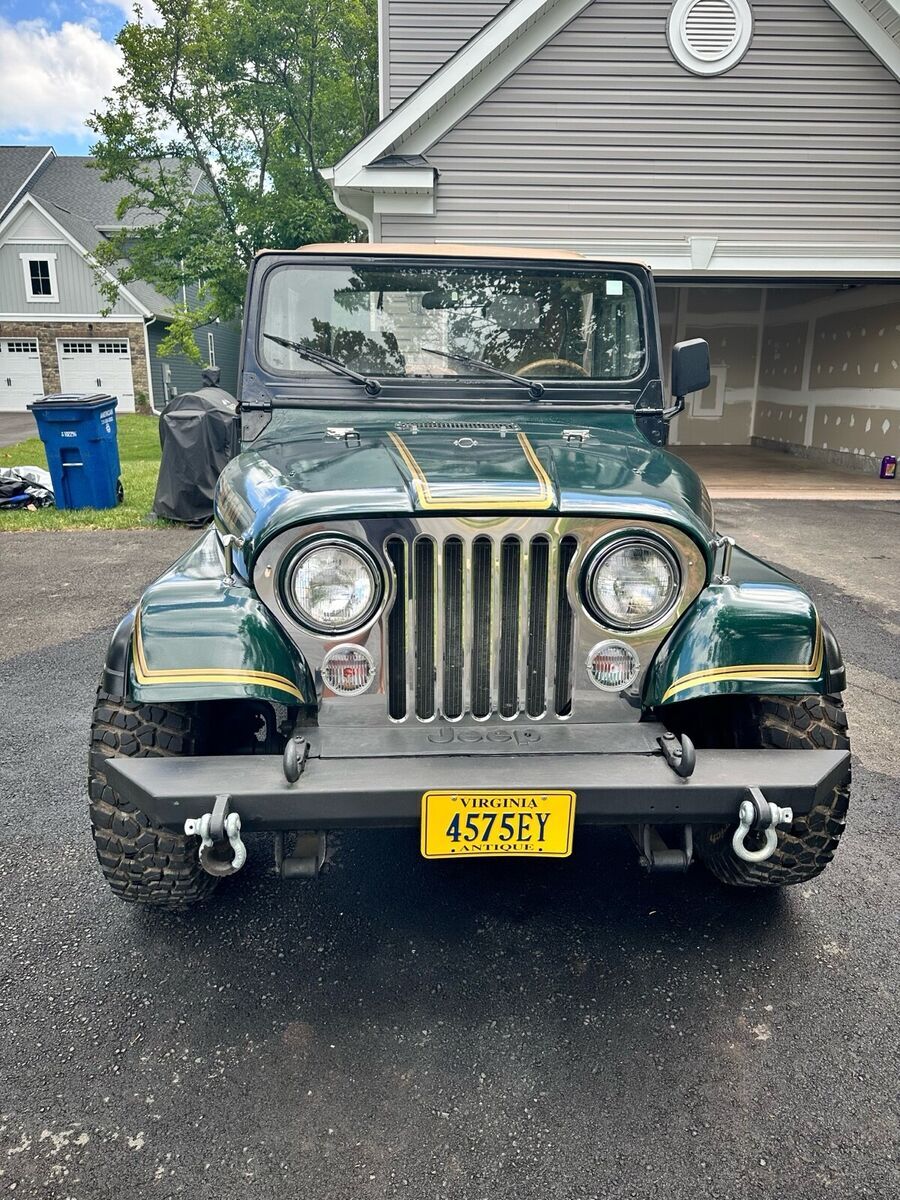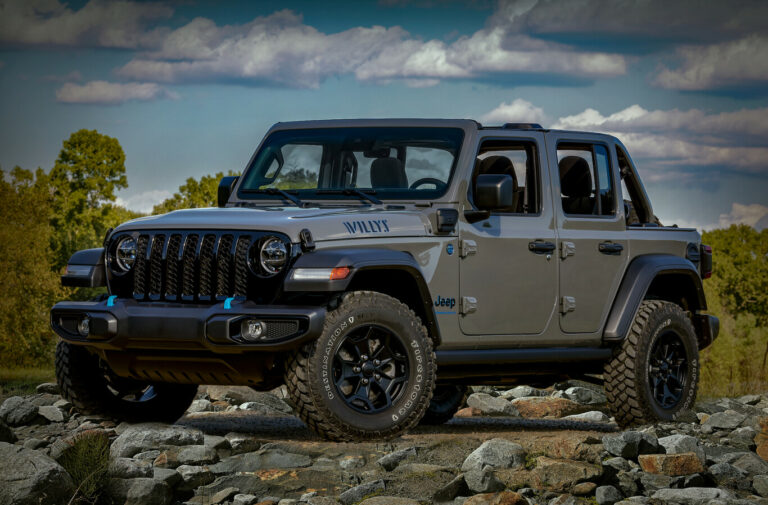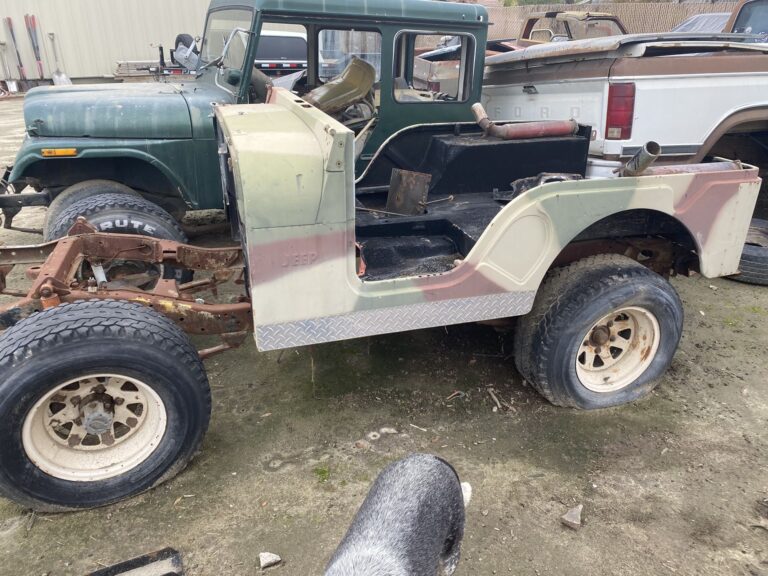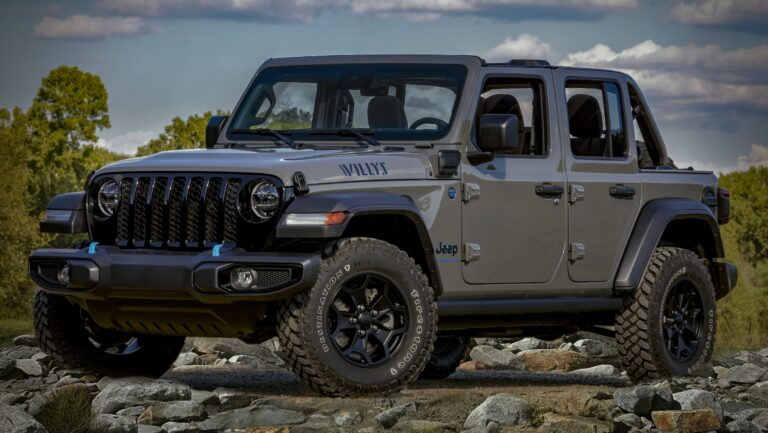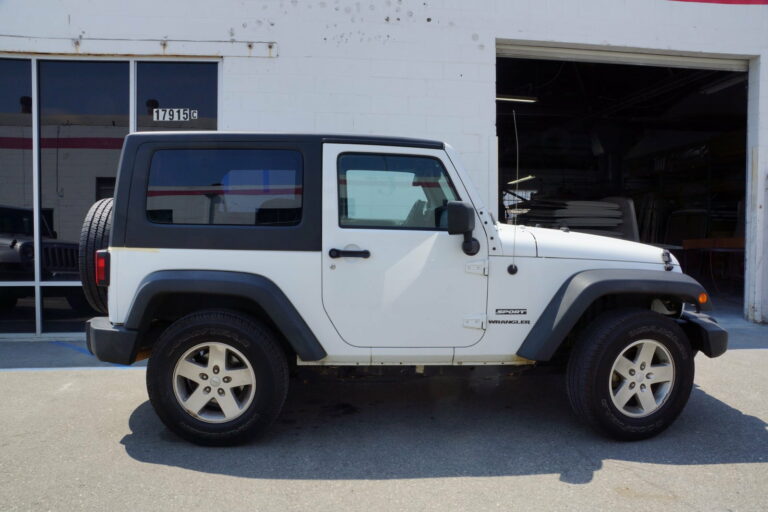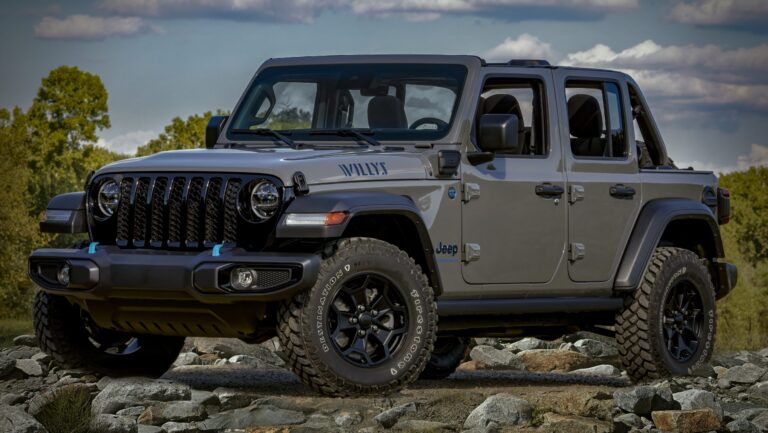1987 Jeep Wrangler 4.2 Engine For Sale: A Comprehensive Buyer’s Guide
1987 Jeep Wrangler 4.2 Engine For Sale: A Comprehensive Buyer’s Guide /jeeps.truckstrend.com
The 1987 Jeep Wrangler, designated as the YJ generation, marked a significant shift in Jeep’s legendary history. While it introduced rectangular headlights (a point of contention for purists), it retained the rugged, go-anywhere spirit that defined the brand. At the heart of many of these early YJ models, and indeed a defining characteristic, was the robust and dependable 4.2-liter (258 cubic inch) inline-six engine, often referred to as the AMC 258. For enthusiasts, restorers, and those seeking to revive a classic off-roader, the "1987 Jeep Wrangler 4.2 Engine For Sale" isn’t just a classified ad; it represents an opportunity to acquire a piece of automotive history and the very soul of a vintage Jeep. This article serves as a detailed guide for anyone considering purchasing this iconic powerplant, exploring its significance, where to find it, what to look for, and the practicalities of its acquisition and installation.
Understanding the AMC 258 4.2L Engine: The Heart of the YJ
1987 Jeep Wrangler 4.2 Engine For Sale: A Comprehensive Buyer’s Guide
The AMC 258 4.2L inline-six engine is legendary in the Jeep community for its simplicity, durability, and most importantly, its prodigious low-end torque. Introduced in 1971, it powered various AMC and Jeep vehicles for decades, reaching its peak in applications like the YJ Wrangler. In its 1987 iteration, it was typically carbureted, often with a problematic Carter BBD or feedback carburetor, producing around 112 horsepower and a healthy 210 lb-ft of torque. While these figures seem modest by modern standards, the engine’s long stroke and six-cylinder configuration made it an ideal choice for off-road crawling, where grunt at low RPMs is paramount.
Key Characteristics:
- Inline-Six Configuration: Inherently balanced and smooth-running.
- Carbureted System: Simple to understand and repair, though less efficient than fuel injection.
- Cast Iron Block and Head: Extremely robust and durable.
- Excellent Low-End Torque: Perfect for off-roading and towing.
- Mechanical Simplicity: Fewer electronic components mean easier DIY repairs.
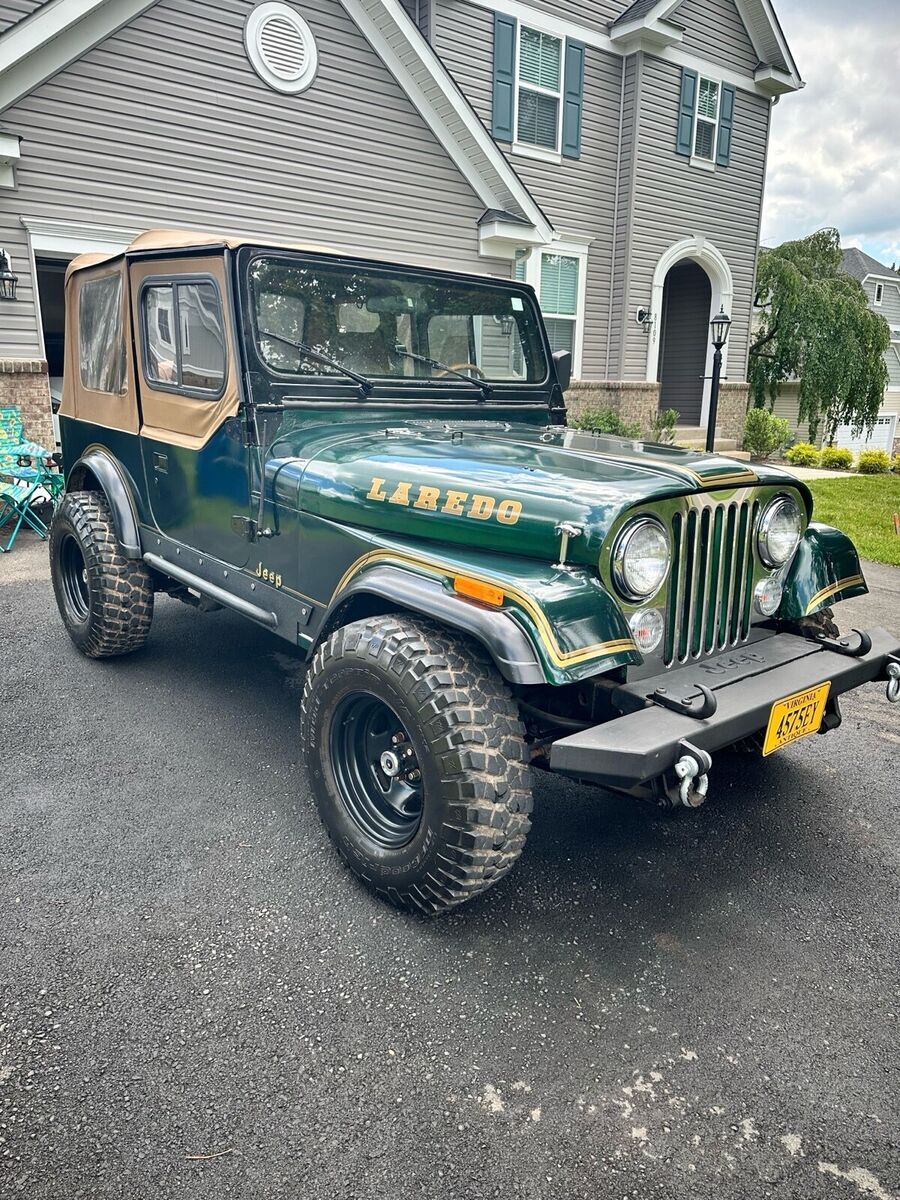
Pros: Reliability, ease of maintenance, readily available parts, excellent low-end torque, and a distinctive classic engine note.
Cons: Sub-optimal fuel economy, carburetor issues (especially the original feedback units), lower horsepower output compared to its successor (the 4.0L), and potential for vacuum leaks.
Why Buy a 1987 Jeep Wrangler 4.2 Engine?
The decision to seek out a specific 1987 Jeep Wrangler 4.2 engine usually stems from a few core needs:

- Engine Replacement: The most common reason is to replace a failing or seized original engine in a 1987 (or other early YJ) Wrangler.
- Restoration Projects: For purists restoring a YJ to original specifications, finding a period-correct engine is crucial.
- Budget-Friendly Repair: Sometimes, sourcing a good used engine can be more cost-effective than a full rebuild of the existing unit.
- Swapping (Less Common): While the 4.2L is less frequently swapped into non-YJ vehicles due to its carburetor and older design, some might consider it for a vintage CJ or even a custom project for its simplicity.

Purchasing a good condition 4.2L engine can breathe new life into an aging YJ, allowing its owner to continue enjoying the classic Jeep experience without the complexities or costs associated with modern engine swaps.
Where to Find a 1987 Jeep Wrangler 4.2 Engine For Sale
Locating a suitable 4.2L engine requires a bit of detective work and patience. Here are the primary avenues:
- Online Marketplaces:
- eBay: Often has a selection of used, rebuilt, and sometimes remanufactured 4.2L engines. Pay close attention to seller ratings and detailed descriptions.
- Craigslist/Facebook Marketplace: Excellent for local finds, potentially allowing for in-person inspection before purchase. Use specific search terms like "Jeep 4.2 engine," "AMC 258," or "YJ Wrangler engine."
- Specialized Jeep Forums & Communities: Websites like JeepForum.com, WranglerForum.com, or dedicated Facebook groups for YJ owners often have "parts for sale" sections where enthusiasts sell components from their projects. This can be a great source for engines from well-maintained vehicles.
- Salvage Yards/Auto Recyclers: Local and national salvage yards (e.g., LKQ, Car-Part.com) frequently list engines from wrecked vehicles. These are often "pullout" engines and may require more scrutiny but can be very affordable.
- Dedicated Classic Jeep Parts Suppliers: Several companies specialize in vintage Jeep parts, and some may carry rebuilt or remanufactured 4.2L engines. These are typically more expensive but come with warranties and assurances of quality.
- Engine Re-manufacturers: Companies that specialize in rebuilding engines to factory specifications. These are the most expensive option but offer a like-new engine with a warranty, often exceeding the original factory build quality.
What to Look For When Buying a 4.2L Engine
Purchasing a used engine can be a gamble, but careful inspection and due diligence can mitigate risks.
- Condition and History:
- Running Pullout: An engine removed from a running vehicle. This is often ideal as you know it worked. Ask for video proof of it running, compression test results, and details on the donor vehicle’s mileage and maintenance.
- Core Engine: An engine sold for rebuild. Expect it to be non-functional and plan for a complete overhaul.
- Rebuilt/Remanufactured: Ask for details on what was replaced (bearings, rings, seals, camshaft, cylinder head work), who did the work, and what warranty is offered.
- Completeness: Does the engine come with critical components like the carburetor, distributor, intake/exhaust manifolds, alternator, power steering pump, and AC compressor? While some might be sold separately, having them included saves time and money.
- Visual Inspection:
- Leaks: Check for oil or coolant leaks around the oil pan, valve cover, front/rear main seals, and head gasket.
- Cracks: Inspect the engine block and cylinder head carefully for any cracks, especially around freeze plugs or exhaust ports.
- Corrosion: Excessive rust or corrosion can indicate neglect or water exposure.
- Belts and Hoses: While these will likely be replaced, their condition can hint at the engine’s overall care.
- Seller Reputation: Check reviews, ask for references, and ensure the seller is transparent and willing to answer all your questions. A seller who provides detailed photos and documentation is usually more trustworthy.
- Documentation: If possible, get details on the donor vehicle (VIN, mileage) or any rebuild receipts.
Installation Considerations and Tips
Once you’ve acquired your 4.2L engine, the next step is installation. This can be a DIY project for experienced mechanics or best left to professionals.
- Associated Components: It’s a good practice to replace several components during an engine swap:
- Engine Mounts: New mounts will prevent excessive vibration.
- Hoses and Belts: Replace all coolant hoses, vacuum lines, and drive belts.
- Fluids: Fresh oil, coolant, and potentially transmission fluid.
- Spark Plugs, Wires, Cap, Rotor: Essential for a smooth-running engine.
- Water Pump and Thermostat: Inexpensive to replace while the engine is out.
- Clutch (Manual Transmissions): If you have a manual, consider replacing the clutch, pressure plate, and throw-out bearing.
- Carburetor Tuning: The original Carter BBD carburetor can be finicky. Be prepared to rebuild it or consider upgrading to a more reliable aftermarket carburetor like a Weber 32/36 or 38/38, or even an aftermarket throttle body fuel injection (TBI) system for improved reliability and performance.
- Ignition System: Verify the condition of the distributor, coil, and ignition module.
- Exhaust System: Ensure your exhaust manifold and downpipe are compatible and free of cracks.
- Professional Help: If you’re unsure about any step, don’t hesitate to consult or hire a qualified mechanic specializing in classic Jeeps.
Potential Challenges and Solutions
- Finding a Good Condition Engine:
- Challenge: Many 4.2L engines are high-mileage or neglected.
- Solution: Expand your search radius, be patient, and consider a remanufactured engine if a good used one is elusive.
- Carburetor Issues:
- Challenge: The original Carter BBD is notorious for problems (vacuum leaks, poor tuning).
- Solution: Budget for a rebuild kit, upgrade to an aftermarket carburetor (Weber), or invest in a TBI conversion (e.g., Howell, Holley Sniper) for modern reliability.
- Shipping Costs:
- Challenge: Engines are heavy and expensive to ship.
- Solution: Prioritize local pickups. If shipping, get multiple quotes and factor it into your budget. Ensure proper crating for transport.
- Unexpected Issues Post-Installation:
- Challenge: Even a good engine can have teething problems once installed.
- Solution: Perform a thorough pre-purchase inspection. Budget for contingencies (e.g., new sensors, minor leaks). Don’t rush the break-in process.
Practical Advice and Actionable Insights
- Set a Realistic Budget: Beyond the engine cost, factor in shipping, associated parts (hoses, belts, fluids, tune-up components), and potential labor costs for installation or unexpected repairs.
- Do Your Homework: Research common issues with the AMC 258 and specific model year quirks.
- Ask Detailed Questions: Don’t be shy. Inquire about the engine’s history, maintenance, reason for removal, and any known issues.
- Inspect Thoroughly: If possible, inspect the engine in person. If not, request high-resolution photos and videos from multiple angles.
- Consider a Pre-Purchase Inspection (PPI): For significant purchases, a PPI by an independent mechanic specializing in Jeeps can save you from costly mistakes down the road.
- Verify Compatibility: While the 4.2L is generally consistent, confirm that the specific engine you’re buying is compatible with your YJ’s transmission and accessory mounts.
Price Table: 1987 Jeep Wrangler 4.2 Engine For Sale
| Engine Condition | Estimated Price Range (USD) | Key Features/Considerations | Typical Availability |
|---|---|---|---|
| Used "Running" Pullout | $500 – $1,500 | Removed from a running vehicle; condition varies; often sold as-is; ask for video/tests. | High |
| Used "Core" Engine | $200 – $600 | For rebuilding only; condition unknown; requires full overhaul; lowest cost. | High |
| Rebuilt Engine | $1,800 – $3,000 | Professionally rebuilt; new wear parts; typically comes with limited warranty. | Medium |
| Remanufactured Engine | $2,500 – $4,000+ | Rebuilt to OEM or better specs; extensive testing; typically comes with longer warranty. | Medium |
| Engine with EFI Conv. | $3,000 – $5,000+ | Remanufactured or rebuilt engine with a pre-installed Throttle Body Injection (TBI) kit. | Low |
Prices are estimates and can vary significantly based on location, seller, included accessories, and market demand.
Frequently Asked Questions (FAQ)
Q: What’s the main difference between the 4.2L (AMC 258) and the 4.0L (AMC 242) Jeep engine?
A: The 4.2L (258 ci) is an older, carbureted engine known for its low-end torque and simplicity. The 4.0L (242 ci), introduced in the YJ in 1991, is a fuel-injected engine with more horsepower, better fuel economy, and generally more refined performance. They share the same block design, but internal components and the fuel/ignition systems are different.
Q: Can I put a 4.2L engine into a newer Jeep Wrangler (e.g., TJ or JK)?
A: While technically possible with extensive modifications, it’s generally not recommended. The 4.2L’s carbureted nature and older technology would require significant custom fabrication, wiring, and adaptation to modern vehicle systems, making it far more complex and costly than simply rebuilding an existing engine or swapping in a more modern, fuel-injected unit.
Q: Is it worth rebuilding a 4.2L engine instead of buying a used one?
A: Yes, absolutely. Rebuilding allows you to know exactly what’s inside the engine, potentially upgrading components for better performance or longevity. While more expensive upfront than a "pullout" engine, a properly rebuilt 4.2L can last for many years and often comes with a warranty from the builder.
Q: What are the most common problems with the 4.2L engine?
A: The most common issues revolve around the original Carter BBD feedback carburetor (prone to vacuum leaks and tuning problems), leaky main seals, and worn valve guides (leading to oil consumption). The factory ignition system can also be prone to issues.
Q: Should I upgrade to fuel injection if I buy a 4.2L?
A: Many enthusiasts highly recommend converting the 4.2L to throttle body fuel injection (TBI). It eliminates carburetor headaches, improves cold starts, increases fuel efficiency, and provides more consistent power delivery, especially off-road. Popular kits include Howell TBI, Holley Sniper, and Edelbrock E-Street.
Q: How much does it cost to install a 4.2L engine?
A: Installation costs vary widely. If you’re doing it yourself, it’s primarily the cost of fluids, gaskets, and any new ancillary parts. If hiring a shop, expect labor costs ranging from $800 to $2,000+, depending on the shop’s rates, any unforeseen issues, and if additional services (like carburetor tuning or accessory swaps) are required.
Conclusion
The 1987 Jeep Wrangler 4.2 engine, the venerable AMC 258, is more than just a power plant; it’s an integral part of the YJ’s identity and a testament to robust, old-school engineering. For those looking to revive a classic Jeep, undertake a restoration, or simply keep their beloved YJ on the trails, finding a "1987 Jeep Wrangler 4.2 Engine For Sale" can be the perfect solution. By understanding its characteristics, knowing where to look, diligently inspecting potential purchases, and preparing for the installation process, you can successfully acquire and integrate this iconic engine. With the right care and perhaps a few modern upgrades, the 4.2L will continue to provide the low-end grunt and reliable service that has defined the Jeep experience for decades, ensuring your classic YJ lives on for many adventures to come.

